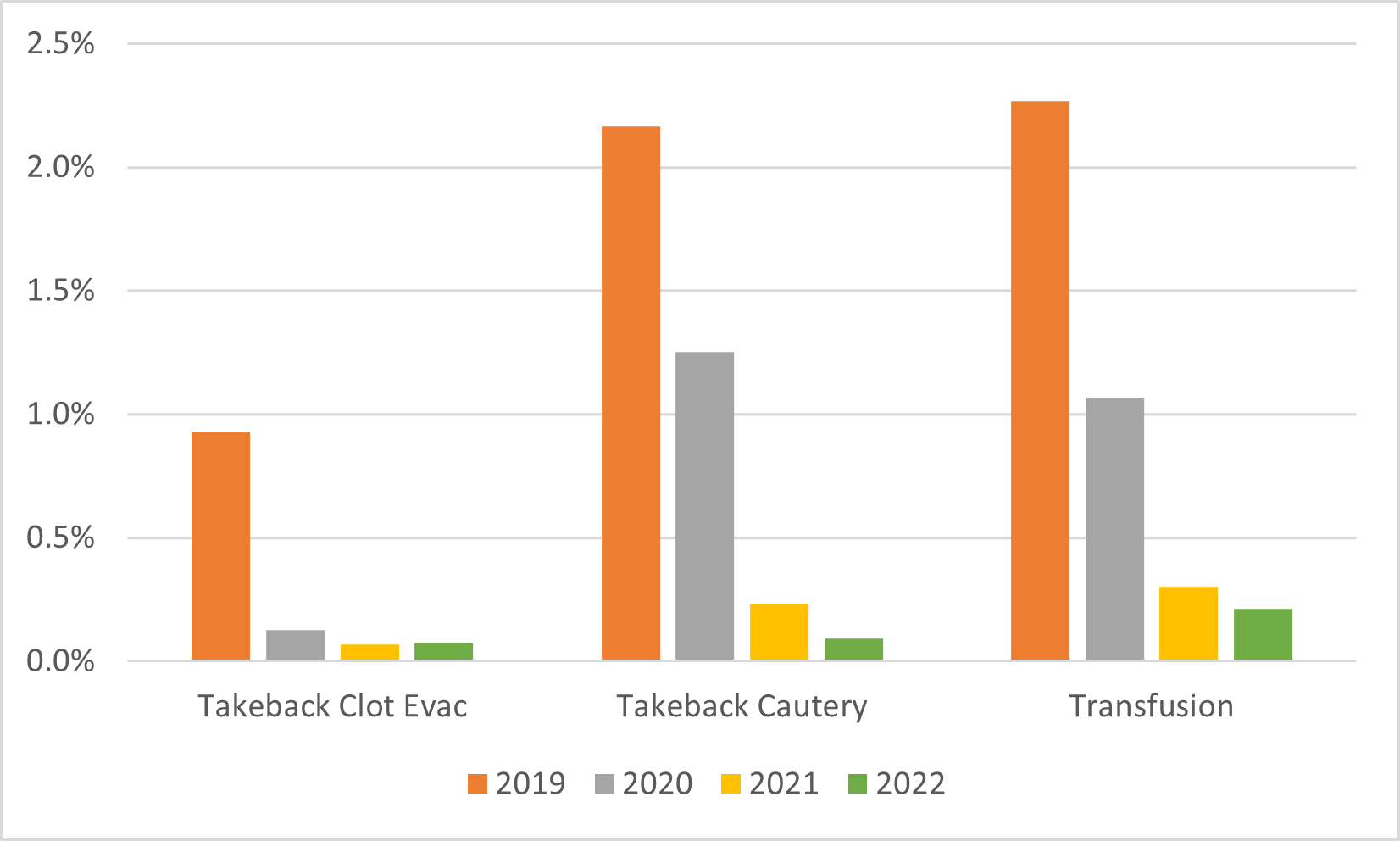Back
Introduction: Aquablation was originally studied in two FDA clinical trials spanning the years of 2015-2017 (WATER in prostates = 80mL, WATER II in prostates = 80mL). Aquablation was granted approval by FDA in December of 2017. Since then, commercial users have adopted a refined focal cautery approach for hemostasis.
Methods: Consecutive, commercial patients undergoing Aquablation from Asia, Europe, and North America were evaluated for bleeding risk of transfusion and takeback over the last 4 years. The source for the reported bleeding events was the FDA MAUDE database that requires manufactures to report global incidents.
Results: 13,447 Aquablation cases were performed with a mean prostate size of 90mL (range 12 to 535mL). Following the introduction of the focal bladder neck cautery protocol in January 2020, Figure 1demonstrates a remarkable decline in bleeding risk requiring an intervention (either a transfusion, takeback for cautery, or takeback for clot evacuation). In 2021 and 2022, the risk of transfusion has reduced to 0.3% and 0.2%, respectively.
Conclusions: Aquablation has leveraged imaging and robotics to allow surgeons to treat the a broad range of prostate sizes. However, early learnings in the development of the procedure, surgeons realized a standardized hemostasis technique was nececessry. Following the adoption of the standardized protocol, the bleeding risk has been reduced by 10-fold and allowing some surgeons the option of day-case Aquablation. SOURCE OF
Funding: Not applicable

Moderated Poster Session
Session: MP51: Benign Prostatic Hyperplasia: Surgical Therapy & New Technology II
MP51-02: Aquablation Postoperative Bleeding Risk Reduction
Sunday, April 30, 2023
7:00 AM – 9:00 AM CST
Location: S404C

Dean Sol Elterman, MD
MD, MSc, FRCSC
University of Toronto
Poster Presenter(s)
Introduction: Aquablation was originally studied in two FDA clinical trials spanning the years of 2015-2017 (WATER in prostates = 80mL, WATER II in prostates = 80mL). Aquablation was granted approval by FDA in December of 2017. Since then, commercial users have adopted a refined focal cautery approach for hemostasis.
Methods: Consecutive, commercial patients undergoing Aquablation from Asia, Europe, and North America were evaluated for bleeding risk of transfusion and takeback over the last 4 years. The source for the reported bleeding events was the FDA MAUDE database that requires manufactures to report global incidents.
Results: 13,447 Aquablation cases were performed with a mean prostate size of 90mL (range 12 to 535mL). Following the introduction of the focal bladder neck cautery protocol in January 2020, Figure 1demonstrates a remarkable decline in bleeding risk requiring an intervention (either a transfusion, takeback for cautery, or takeback for clot evacuation). In 2021 and 2022, the risk of transfusion has reduced to 0.3% and 0.2%, respectively.
Conclusions: Aquablation has leveraged imaging and robotics to allow surgeons to treat the a broad range of prostate sizes. However, early learnings in the development of the procedure, surgeons realized a standardized hemostasis technique was nececessry. Following the adoption of the standardized protocol, the bleeding risk has been reduced by 10-fold and allowing some surgeons the option of day-case Aquablation. SOURCE OF
Funding: Not applicable

